New lease accounting is now here! For public companies, it begins for annual periods beginning after December 15, 2018 and for private companies it begins for annual periods beginning after December 15, 2019. This new guidance requires companies to capitalize these lease commitments on their books similar to what industries have done for capital leases. For more information on the impact of the guidance, refer to a previous article about this topic https://larsco.com/lease-accounting-fully-evaluate-the-impacts-of-recent-fasb-changes/. For companies who are currently implementing ASC 842, one of the common questions that often arises is whether Common Area Maintenance (CAM), Taxes, and Insurance that are included in the lease contract be included in the initial allocation of consideration for lease and non-lease components Additional review of the guidance is needed to understand the answer.
ASC 842-10-15-30 requires the consideration in the lease contract be allocated to each separate lease component and non-lease component of the contract. According to ASC 842-10-15-33, this is implemented as follows:
- The lessee shall determine the relative standalone price of the separate lease components and the non-lease components based on their observable standalone prices. If observable standalone prices are not readily available, the lessee shall estimate the standalone prices, maximizing the use of observable information.
- The lessee shall allocate the consideration in the contract on a relative standalone price basis to the separate lease components and the non-lease components of the contract.
An entity must now account for each separate lease component separately from the non-lease components of the contract. Any lease components are accounted for in accordance with ASC 842. Non-lease components are not within the scope of ASC 842 and, therefore, are accounted for in accordance with other Topics such as ASC 606 (Revenue from Contracts with Customers).
Fixed vs. Variable
According to ASC 842-10-15-35 states that:
“The consideration in the contract for a lessee includes all of the payments described in paragraph 842-10-30-5, as well as the following payments that will be made during the lease term:
- Any fixed payments (for example, monthly service charges) or in substance fixed payments, less any incentives paid or payable to the lessee, other than those included in paragraph 842-10-30-5
- Any other variable payments that depend on an index or a rate, initially measured using the index or rate at the commencement date.”
For CAM, taxes, and insurance, there are usually 3 common arrangements regarding how it is arranged in a lease contract:
- The CAM, taxes, and insurance are paid based on a variable rate depending on what the market price would be.
- The CAM, taxes, and insurance are paid based on a variable rate with the rate adjusted based on future CPI changes or a specified rate.
- The CAM, taxes, and insurance are paid based on fixed rates without additional increases.
When applied with the guidances noted above, situation 1 where the CAM, taxes, and insurance are based on variable rate not tied to an index or rate, will not even be considered as it does not fall into the category of needing to be included in the consideration of the contract. However, if the CAM, Taxes, and insurance are either fixed (scenario 3) or is a variable payment where the increases or decreases are based on a certain index (scenario 2), then the payments should be considered.
Is it a Component?
As mentioned perviously, ASC 842 requires companies to allocate contract considerations between lease and non-lease components. Lease components will be accounted for in accordance to ASC 842 but non-lease components will be accounted for using other guidance. In Accordance to ASC 842-10-15-30, such components should be distinguishable. If not, then they will be incorporated as part of the lease. Components that are not considered distinguishable are as follows according to ASC 842-10-15-30:
Components of a contract include only those items or activities that transfer a good or service to the lessee. Consequently, the following are not components of a contract and do not receive an allocation of the consideration in the contract:
- Administrative tasks to set up a contract or initiate the lease that do not transfer a good or service to the lessee
- Reimbursement or payment of the lessor’s costs. For example, a lessor may incur various costs in its role as a lessor or as owner of the underlying asset. A requirement for the lessee to pay those costs, whether directly to a third party or as a reimbursement to the lessor, does not transfer a good or service to the lessee separate from the right to use the underlying asset.
Costs related to property taxes clearly do not involve transfer of a good or service and thus would not be considered contract components. As such, these costs do not represent payments for goods and services and are simply part of total consideration of the lease contract. However, as mentioned earlier, only if the property taxes are fixed or are variable based on index or rate would you need to include them in your total consideration. If they are not, then they can be excluded for any further analysis during the initial lease analysis and are accounted for when they are paid.
CAM however, represents a true service that is to be performed by the lessor in maintaining the property. If the lessor were not providing these services, the lessee would’ve needed to hire someone else to help maintain the property. As such, CAM would need to be included as a non-lease component, and will be accounted for as a non-lease component in accordance to ASC 606.
Practical Expedient
If this is too difficult to track, ASC 842 does allow for a practical expedient which allows companies to elect an accounting policy, be asset class, to include both the lease and non-lease components as a single component and account for it as lease. This guidance helps alleviate the need for companies to allocate contract considerations between lease and non-lease components and greatly simplifies the process. However, companies that are considering applying this practical expedient should know that this election will increase the lease liability recorded on its balance sheet and consider whether this may or may not adversely effect the companies performances, in particular its impact to certain debt covenants.
Conclusion:
Below is a summary of what is discussed above:
| Fixed | Variable that depends on an index | Variable and not based on index or rate | |
| CAM | Included as non-lease component | Included as non-lease component. | Not included with contract consideration for initial evaluation. Will be recorded in accordance to ASC 606. |
| Taxes and Insurance | Included as part of total lease consideration and not a separate component | Included as part of total lease consideration and not a separate component | Not included with contract consideration |
As you can see, the new lease standard introduces many new nuances that should be considered. Companies should began reviewing their leases now to determine how ASC 842 may impact them. If you have additional questions, please feel free to contact Larson & Company for help.




